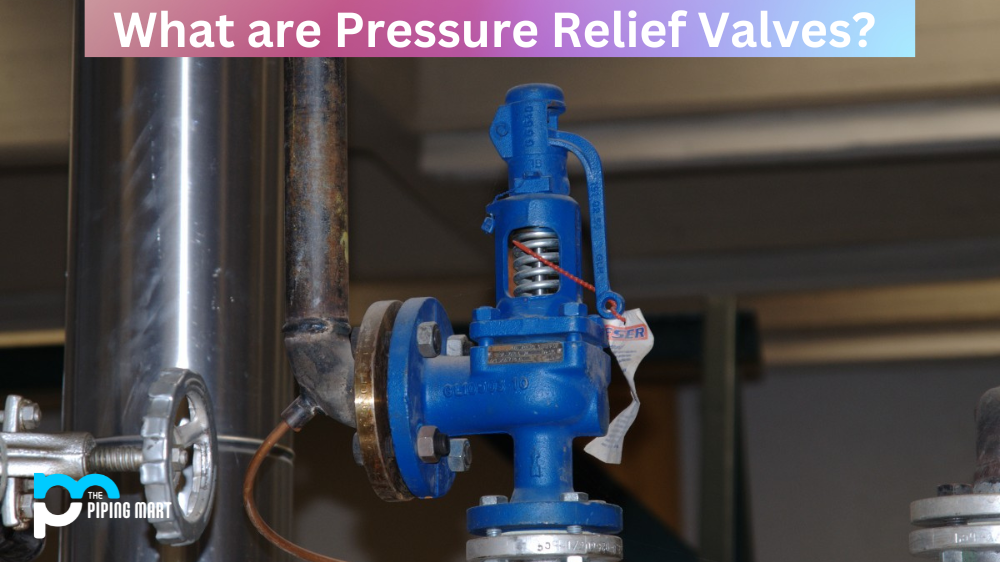Pressure relief valves, also known as pressure-reducing valves, are an essential component in any system that needs to regulate the pressure of a liquid or gas. These valves are designed to relieve excess pressure buildup in a system, thus protecting it from dangerous overpressure. In this blog post, we will discuss the properties and uses of pressure relief valves so you can make an informed decision when selecting one for your system.
Pressure relief valve Properties
Pressure relief valves come in a variety of sizes and styles. Their primary purpose is to open when the set pressure is exceeded in order to reduce the risk of damage or destruction of the container or vessel containing the fluid or gas. The most common type is referred to as a “spring-loaded” valve because it uses a spring mechanism to open when necessary. Other types include bellows, diaphragms, and pilot-operated designs.
The right valve for your application should be chosen based on several factors, including material compatibility with the fluids present, flow rate requirements, temperature range needed, and size restrictions due to space constraints. It should also be able to withstand vibration and shock from any moving parts in the system, such as pumps or compressors. The most important factor is that it must be able to open at the correct safety setting for your application; otherwise, it won’t provide any protection if an overpressure event occurs.
- Pressure relief valves are designed to open at a predetermined set pressure in order to relieve excess pressure from a system.
- Pressure relief valves are an important safety component in many types of systems, as they help to prevent damage to the system and injury to those nearby.
- There are many different types of pressure relief valves, each designed for a specific application.
- Pressure relief valves must be sized correctly for the system in which they are installed, as an undersized valve will not be able to adequately relieve excess pressure, and an oversized valve may cause the system to operate at less than optimal levels.
- Pressure relief valves require regular maintenance in order to ensure that they are functioning properly.
Pressure relief valve Uses
Pressure relief valves are used in many industrial applications where controlling pressure is essential for safety reasons. Examples include oil refineries, chemical plants, steam boilers, water heaters, air compressors and tanks containing pressurized gases such as carbon dioxide or oxygen tanks used in welding operations. They are also found on aircraft and spacecraft, where they help maintain cabin pressurization by venting off excess air when necessary. Other common applications include automotive cooling systems, where they help prevent engine overheating by releasing coolant when necessary; medical equipment, such as blood transfusion machines, where they act as a fail-safe device; and home appliances, such as dishwashers where they prevent excessive water buildup due to blockages in filter pipes or hoses by releasing water before it reaches dangerous levels inside the machine cavity.
- Pressure relief valves are used in a variety of industries to protect equipment from overpressurization.
- They are commonly used in the oil and gas industry, as well as in chemical plants and power plants.
- Pressure relief valves can also be used in household appliances, such as water heaters and boilers.
- In some cases, pressure relief valves are used to release pressure buildup in order to prevent explosions.
- Pressure relief valves are an important safety device and should be regularly inspected to ensure that they are functioning properly.
Conclusion:
Pressure relief valves are an invaluable safety component for many industrial processes that require precise control over pressurized liquids or gases. They come in various sizes and styles depending on how much flow rate you need and what material compatibility is required with whatever fluid you are using in your system. By understanding how these devices work and what their uses are, you will be better equipped to make an informed decision when selecting one for your application’s needs!

A passionate metal industry expert and blogger. With over 5 years of experience in the field, Palak brings a wealth of knowledge and insight to her writing. Whether discussing the latest trends in the metal industry or sharing tips, she is dedicated to helping others succeed in the metal industry.




